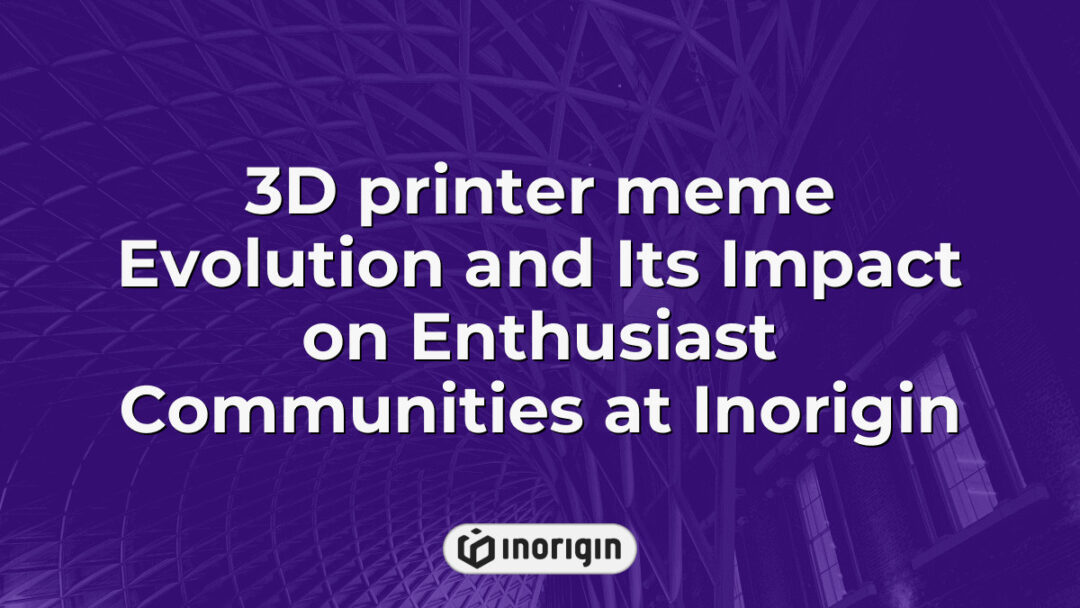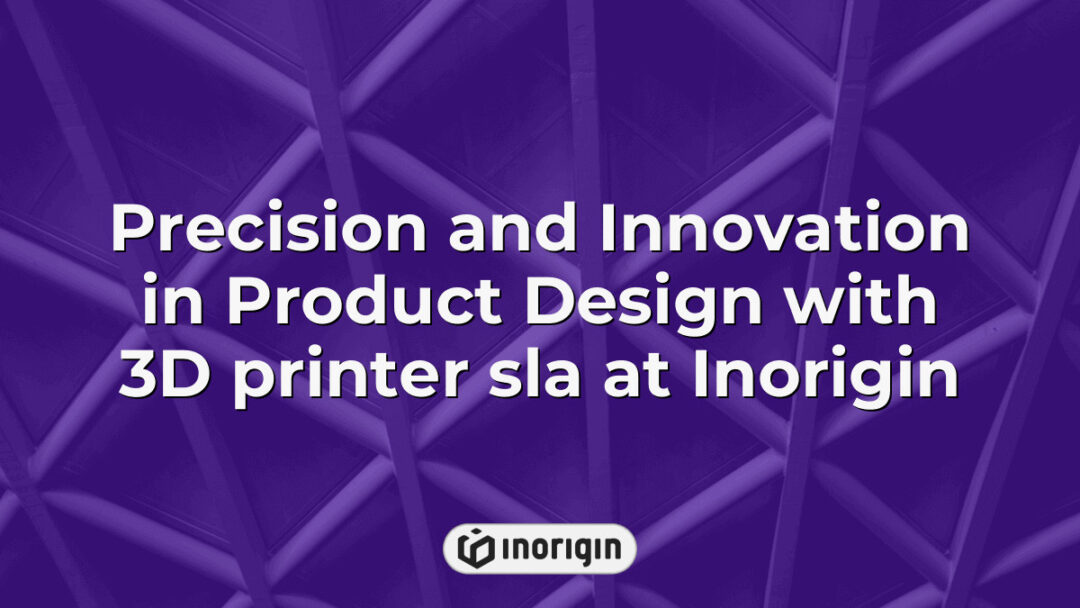The phenomenon of 3D printer memes has surged in popularity, reflecting a unique intersection of technology, creativity, and humor within contemporary digital culture. These memes encapsulate the intricate capabilities of 3D printing, often juxtaposing the high-tech innovation with relatable, everyday scenarios that resonate with a diverse audience. By employing visual wit and clever commentary, 3D printer memes serve not only as vehicles for amusement but also as informative artifacts that illuminate the societal perceptions and misconceptions surrounding additive manufacturing. This article seeks to explore the implications of such memes, examining their role in shaping public understanding and acceptance of 3D printing technology in an increasingly digital age.
| Aspect | Key Takeaway |
|---|---|
| Focus Keyword Overview | 3D printer memes blend cutting-edge technology with humor, highlighting both the capabilities and quirks of additive manufacturing. |
| Community Engagement | These memes build strong online communities by sharing relatable experiences and practical insights among 3D printing enthusiasts and professionals. |
| Popular Themes | Common themes portray technical successes and malfunctions humorously, reflecting the challenges and creativity in 3D printing processes. |
| Cultural Impact | 3D printer memes serve as cultural commentary, shaping public perception and fostering acceptance of emerging fabrication technologies. |
| Content Creation | Effective meme creation requires blending technical knowledge of 3D printing with creative expression to enhance engagement and relatability. |
| Promotion Strategies | Leveraging social media platforms like Instagram and TikTok with targeted hashtags and community collaboration can effectively increase meme visibility. |
| Legal Considerations | Understanding copyright laws and using licensed or public domain images is essential to avoid infringement when creating and sharing memes. |
History and Evolution of 3D Printer Memes
The narrative surrounding 3D printer memes can be likened to a rapidly flowing river, where ideas and creativity converge, shaping perceptions and humor in the digital age. Initially gaining traction in the early 2010s as the popularity of 3D printing surged, these memes often encapsulated the challenges and quirks associated with the technology. From playful representations of printer malfunctions to humorous takes on the excitement surrounding DIY 3D printing projects, the evolution of these memes reveals not only a shift in technological accessibility but also a cultural commentary on innovation. Transitioning from simple jokes to more sophisticated satire, 3D printer memes have reflected both the triumphs and tribulations of amateur makers and professional engineers alike. The interplay between technological advancements and meme culture continues to fuel this phenomenon, as creators leverage humour to express the complexities and absurdities inherent in the 3D printing process. As such, the history and evolution of 3D printer memes illustrate their role as a unique form of social dialogue, serving to educate and entertain, all while influenced by the ongoing advancements in 3D printing technology.
Popular 3D Printer Meme Themes
The prevalence of memes centred around 3D printing reveals several popular themes that resonate with the community. For instance, the humorous side of failures and mishaps has garnered significant attention; users often find amusement in the various unexpected outcomes that can arise during the printing process. A common trope involves the depiction of printers exhibiting quirks or malfunctioning in absurd ways, leading to designs that are far from the intended results; these moments are shared widely within forums and social media. In addition, the juxtaposition of high-tech capabilities against mundane everyday objects underscores a rich vein of satire, as creators use humour to highlight the often absurd expectations surrounding 3D printing. This interplay between technology and everyday life fosters a connection among users who appreciate the inherent chaos behind some of these attempts, creating a shared understanding of both frustration and fun. The intersection of humour and technical work embodies a lively exchange of ideas, illustrating how the community navigates the complexities of innovation with a playful attitude.
The Role of 3D Printer Memes in Online Communities
In an age where memes can be seen as the narrative voice of the internet, particularly in the realm of technology, the role of 3D printer memes presents an ironic twist: ostensibly about advancing fabrication technology, yet often serving as a humorous commentary on the unpredictable nature of innovation itself. These memes thrive in online communities, acting as both a form of entertainment and a method for sharing common experiences among enthusiasts and novices alike. For instance, a meme depicting a failed print job can resonate widely; it reflects the frustrations users face, thus creating a sense of solidarity in a landscape often dominated by the successes celebrated by tech influencers. This however doesn’t detract from the functional capacity of 3D printing but rather highlights the myriad challenges encountered by its users, illustrating a blend of humour and reality that characterizes the digital conversations. Through memes, individuals within these communities find not only amusement but also a platform for exchanging tips, troubleshooting techniques, and insights related to the technology itself; what may initially appear to be mere jokes often congregate profound truths about the intricacies of 3D printing and the human experience tied to it. As 3D printer technology evolves, so too does the meme culture surrounding it, reflecting the ongoing dialogue and interplay between progress and the quirks of everyday usage.
Creating Your Own 3D Printer Memes
Creating one’s own 3D printer memes can be likened to a modern-day alchemist turning commonplace materials into gold, a transformative process underpinned by creativity and a touch of technology. This artistic endeavor not only serves to entertain but also fosters community engagement within the 3D printing ecosystem. The starter kit for this venture includes an understanding of 3D printable models and a grasp of how 3D printers operate, as this knowledge acts as the foundation upon which amusing and thought-provoking memes are built. As the development of software platforms and social media enables creators to easily produce and disseminate their works, a lively exchange of ideas takes place, sparking inspiration and leading to the evolution of meme culture in this niche. For instance, utilising trending themes or common frustrations with 3D printers can heighten the relatability of these memes, thereby solidifying their impact within online communities. With the right mix of creative flair and technical understanding, the production of 3D printer memes becomes not just an art form, but also a means of defining collective experiences and, ultimately, a conduit for humour shared across the global 3D printing community.
Future Trends in 3D Printer Meme Culture
The future trends in 3D printer meme culture reveal a fascinating intersection of technology and creativity. As 3D scanning becomes increasingly accessible, it propels the generation of memes that capture not just humour but also societal commentary and innovation. The advent of affordable 3D printers has democratized the process, allowing a wider demographic to engage with meme creation; therefore, individuals can manipulate digital objects and share custom, often humorous interpretations of contemporary issues. For instance, certain memes combine the aesthetics of 3D-printed objects with cultural references, enhancing relatability. Additionally, the evolution of software tools designed specifically for meme generation further streamlines the creation process, meaning that users spend less time on technicalities and more on imaginative expression. Thus, this merging of cutting-edge technology with creativity not only shapes meme culture but also reflects broader societal dynamics, such as the embrace of rapid prototyping and personalisation in digital spaces. The trend towards increased interactivity suggests memes may soon evolve into more advanced formats, potentially incorporating augmented reality features that deepen user engagement and extend the lifespan of these digital artefacts.
Frequently Asked Questions
What are some popular software tools for creating 3D printer memes?
Creating 3D printer memes can be visually described as a whirlwind of creativity, where ideas spin and twist in a three-dimensional space. Within this engaging sphere, software tools serve as the essential catalysts, propelling the imaginative process. Programs such as Tinkercad, a user-friendly platform favoured by many newcomers, and Blender, known for its advanced capabilities, are frequently employed to craft these memes. Additionally, Fusion 360 provides a blend of CAD and animation features, making it a robust choice for more intricate designs. Anything from basic shapes to elaborate models can be manipulated with such tools, illustrating the broad range of possibilities for meme creation. As these applications continue to evolve, they introduce innovative features and capabilities, resulting in a dynamic environment that fosters new forms of expression and artistry in the world of 3D printing. Ultimately, the accessibility and versatility of these software tools not only enhance the ability to create memes but also foster an engaging community where creativity thrives amidst the playful chaos of 3D printed humour.
How can I promote my 3D printer memes on social media?
Promoting 3D printer memes on social media involves utilising various targeted strategies to maximise reach and engagement. Initially, identifying the most suitable platforms is crucial; for instance, Instagram and TikTok have gained immense traction for visual content, making them ideal for meme dissemination. Engaging users with high-quality visuals and humour, while employing relevant hashtags, can enhance visibility significantly. Transitioning to collaborations with influencers within the 3D printing community may also facilitate broader exposure, as such partnerships can leverage their established audiences. In addition, participating in relevant online forums and communities, such as Reddit’s r/3Dprinting, allows for direct interaction with enthusiasts who may share the memes, further amplifying their spread. The timing of posts, aligned with trending topics or events, can act as a leverage point for virality, while maintaining an authentic and relatable tone enhances connection with audiences. Therefore, a multifaceted approach that combines these elements could lead to an effective increase in the popularity of 3D printer memes across different social media platforms. Enhanced engagement metrics, such as likes and shares, could subsequently validate the efficacy of these strategies.
What are the legal implications of using copyrighted images in 3D printer memes?
The use of copyrighted images in 3D printer memes raises several legal considerations that creators and users must understand. First, copyright law provides protection for original works, which includes visual content. Hence, utilising an image without permission or a fair use justification may lead to potential legal action. This situation can become more complicated due to the context in which the images are used, especially if the memes gain significant traction online, drawing attention from copyright holders. To grasp the full implications, there are three key points that warrant examination: 1) the doctrine of fair use, which may allow limited use of copyrighted material; 2) the differentiation between commercial and non-commercial uses, as this can affect liability; and 3) the importance of obtaining necessary licenses when needed, particularly for public distribution. Each of these factors influences the legal landscape surrounding meme creation and dissemination. Consequently, creators should be vigilant in ensuring they navigate these considerations carefully, as missteps could result in infringement claims or the requirement to pay hefty damages if a copyright holder decides to act against them.
In light of this, proactive measures such as seeking explicit permissions or choosing images from public domain sources could mitigate risks considerably.
Conclusion
The phenomenon of 3D printer memes illustrates the intersection of technology and humor, fostering community engagement and creativity. As the digital landscape evolves, one must ponder: how do these memes not only reflect but also shape the perceptions surrounding technological advancements? The future of 3D printer memes holds significant implications for culture and communication.
Related posts:
- Creative Innovations Behind Funny 3D Prints That Spark Joy and Laughter
- Cult 3D Printing Communities Shaping Ethical Innovation and Collaborative Design Trends
- Fea test Effects on Cultural Identity Through Ugly Head Symbolism and Psychology
- Innovations Transforming Online 3D Modeling for Product Design and Engineering
- Cults 3D Prints Revolutionizing Artifact Creation and Technological Integration in Cult Communities
- The Influence of Cults 3D Print on Community Dynamics and Legal Boundaries




